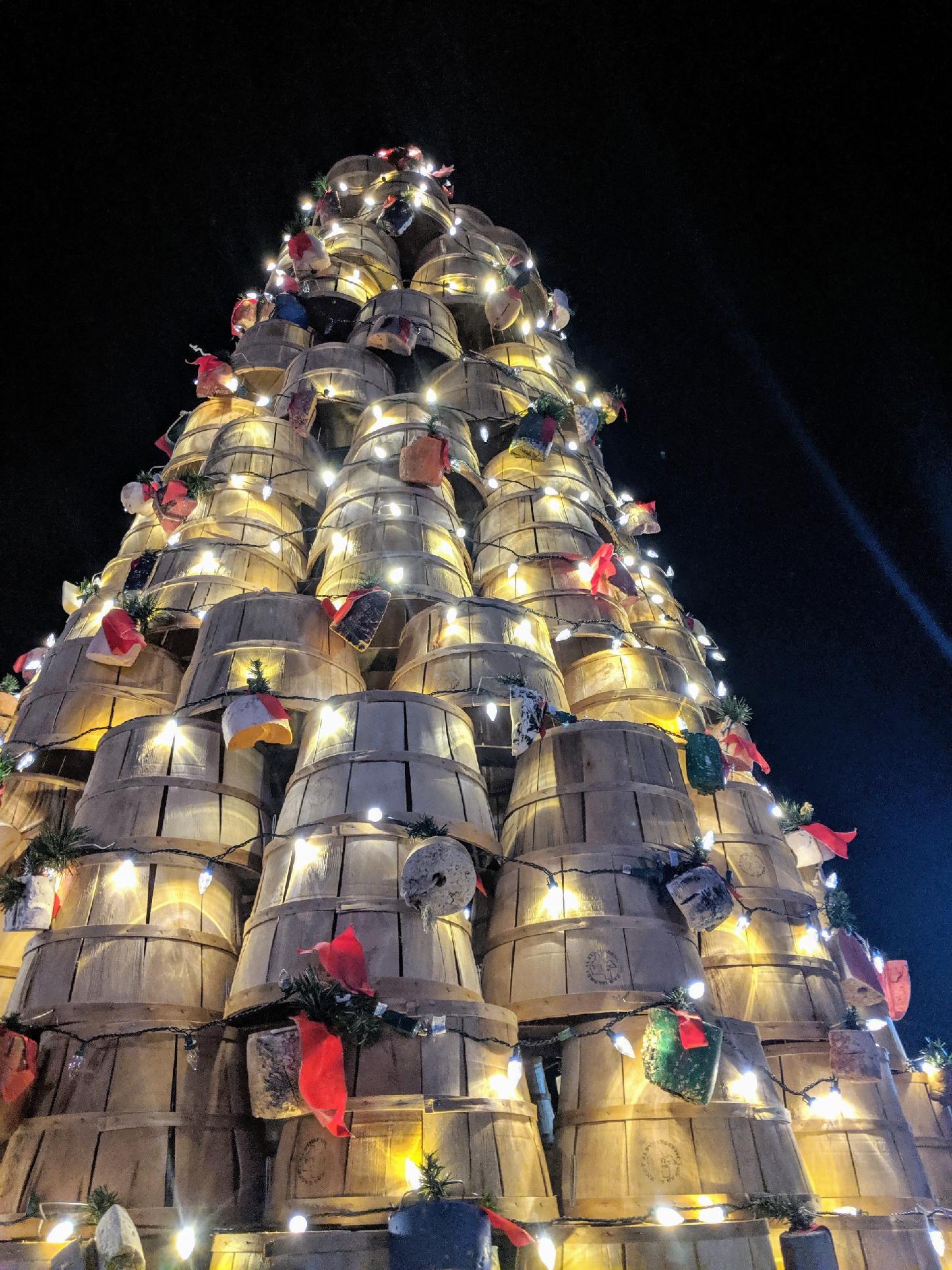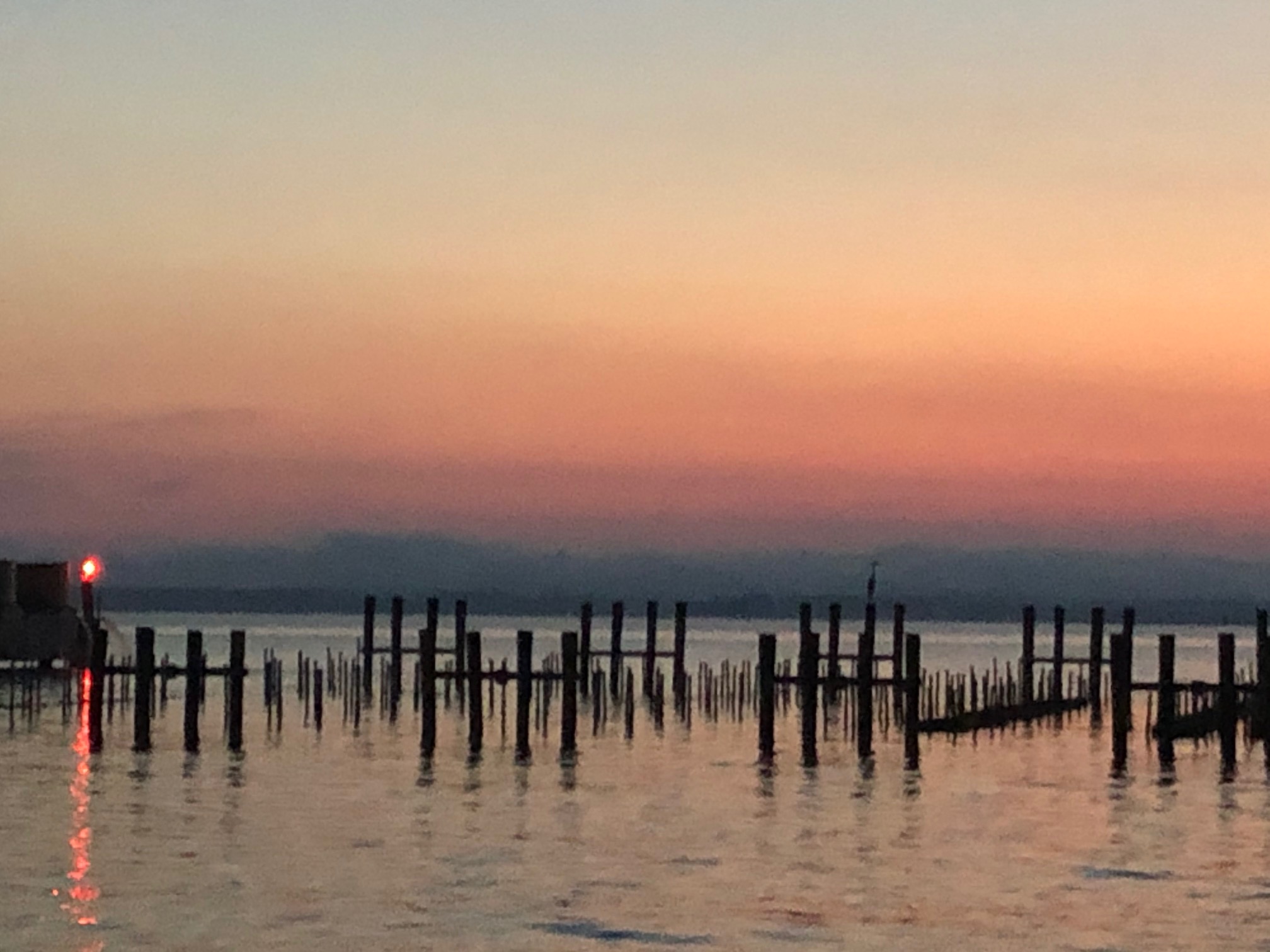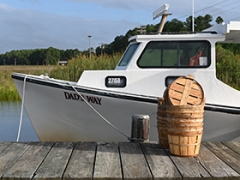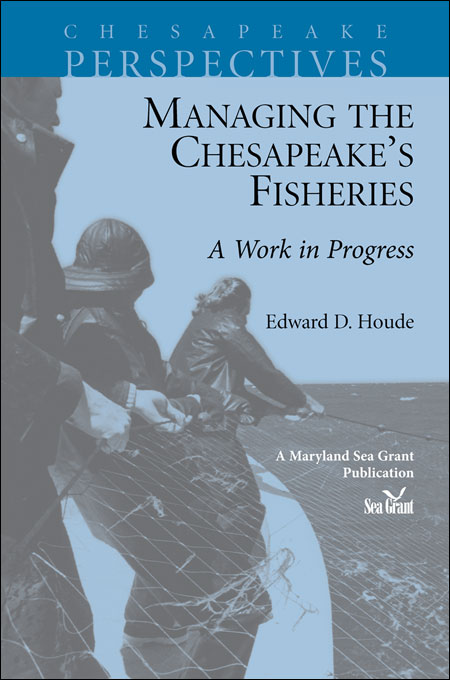Knauss legislative fellowships in Congress help build careers — and they're fun and educational. See our video and fact sheet for details.
Cultivating Culture: Highlighting the resiliency of shellfish farmers and watermen in uncertain times
For the past seven years, I have been a student at the University of Maryland Center for Environmental Sciences Horn Point Laboratory researching fisheries and aquaculture. I have never encountered a community more passionate about their heritage than the Chesapeake Bay watermen.
Time seems to revolve around the bounty they catch. The summer is marked by crab feasts and the winter by oyster festivals, all while wearing white duck boots and apparel featuring the Maryland state flag. In Cambridge, Maryland, the city’s Christmas tree is not fir or holly but rather upside-down bushel baskets, representing a heritage that runs deep on both sides of the Chesapeake. Oysters, and crabs, are more than the main fisheries–they are a powerful cultural symbol for those who live along the Chesapeake Bay.
Despite having the ongoing support from their community, the continued harvest and cultivation of oysters in Chesapeake Bay has been hard-fought since its inception. The environment has time and time again created nearly insurmountable difficulties in commercial harvests, threatening the way of life of the men and women in this industry. Widespread outbreaks of the shellfish parasites, Dermo, and MSX decimated wild populations of Chesapeake Bay oysters in the late 1950s and 1980s, drastically reducing the available catch for the wild fishery. And over the past three years, an increase in rainfall reduced the salinity in mid-Bay waters, which nearly halted oyster seed production in hatcheries.

In addition to natural events, the oyster fishery in Maryland, as well as the national seafood industry, has been drastically affected by the presence of COVID-19. The major market for many oyster fishers and farmers is to restaurant distributors. Because of the efforts to reduce the spread of this disease, those distributors have had to reduce, or in some cases halt, the purchase of oysters for these markets this past year. Carryout may be a popular option, but oysters on the half shell has largely been something diners prefer to eat at a bar or restaurant and would rather not shuck on their own at home.
While all may seem doom and gloom, the exceptional resiliency of the men and women who catch the Chesapeake’s bounty are the reason the Bay’s “watermen” culture has been preserved and will continue to thrive despite challenges. Despite the magnitude of threats that watermen have faced, they continue to endure and find new ways to succeed. The ability of watermen to communicate with each other, with researchers, and with policymakers has helped them endure. At the Horn Point Laboratory in Cambridge, where I work, researchers and scientists are using a variety of approaches to collaborate with watermen as well as oyster farmers, which is a newer part of the industry that includes some watermen who have diversified into oyster farming after a career building boats, crabbing, and dredging for oysters.
Those collaborative efforts have helped our lab cultivate disease-resistant oysters to protect the population as well as develop new designs for cages and processing equipment, and marketing efforts to promote farm-raised oysters. They have also resulted in Oyster Futures, a collaborative approach that included watermen, recreational fishing advocates, conservationists, and scientists meeting to determine a path forward for a crucial Bay resource. The National Science Foundation provided funding for that effort.
Maryland Sea Grant Extension specialists who work on oyster aquaculture have developed a “shuck at home” series of videos to teach first-timers how to open up an oyster with tools they have on hand in their kitchens. Here is Shannon Hood demonstrating the technique, and her colleague, Matt Parker, showing how oyster lovers can use their freezers to shuck oysters for them. And I jump in, too, with recipes and video demonstrations of a few of my favorite oyster recipes. Fall and winter are an excellent time to try them.
For watermen and others who enter aquaculture, statewide programs are also available to assist growers looking to start a farm through financial assistance and education. Researchers with ideas to advance technology within the oyster fishery, such as a robotic oyster shucker, are being considered for funding to help advance the industry. Multiple agencies, including the National Oceanic and Atmospheric Administration and US Department of Agriculture, have declared fisheries aquaculture is a priority.

Just before Thanksgiving, members of the oyster aquaculture community gathered at the 2020 Maryland Shellfish Aquaculture Conference, hosted by the Chesapeake Bay Foundation, to share ideas and promote future success in the industry. In this meeting alone, topics spanned from marketing and branding, to innovative technologies, to finance and funding. Despite so many challenges, the oyster aquaculture industry in Maryland is resilient because of the open dialogue and interest in collaboration among growers, researchers, and government agencies.
Raising and harvesting oysters provides many benefits to the environment. Oysters filter the water and remove extra nutrients in the water while still being safe to eat. Also, oyster reefs and aquaculture equipment such as floating cages are thought to reduce the amount of erosion on our coasts while increasing the abundance of crabs and fish. That’s why our state and federal government have been supporting innovations in this field and investing in this industry. While times may seem rough, I am confident that the future for the Maryland watermen and the aquaculture industry will continue to thrive and receive the overwhelming support of their community.
Photo, top left: A workboat docked in Dorchester County, Maryland. Photo credit: Lisa Tossey / MDSG
See all posts to the Fellowship Experiences blog




